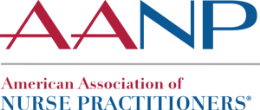How to Prepare Your Patients for Hypoglycemia

Help your patients plan ahead for hypoglycemia with these tools and resources from your nurse practitioner association.
“Hypoglycemia continues to be a major barrier to optimal glycemic management in both Type 1 and Type 2 diabetes,” states Patty Scalzo, MSN, ANP-BC, CDCES, nurse practitioner (NP) and education specialist for the American Association of Nurse Practitioners® (AANP). On the latest episode of NP Pulse: The Voice of the Nurse Practitioner®, Scalzo discusses the challenges patients and providers face with hypoglycemia — a dangerous condition that can affect anyone with diabetes who is treated with insulin preparations or oral insulin secretagogues. “Severe hypoglycemia can lead to falls, motor vehicle accidents, seizures, coma and even death,” explains Scalzo. “Every person living with diabetes who is at risk of hypoglycemia needs to have a plan in place to manage it when it occurs.”
NPs are instrumental in the care of people with diabetes and hypoglycemia. In order to support providers caring for patients with diabetes, NP Pulse brought on Scalzo and fellow NP experts Debbie Hinnen, APN, BC-ADM, CDCES, FAAN, and Shannon Idzik, DNP, CRNP, ANP-BC, FAANP, FAAN, to discuss the NP's role in ensuring that their patients who are at risk of hypoglycemia have a written plan in place to manage it. Read on to glean insights from their discussion, access AANP tools and resources on hypoglycemia and find out how to gain valuable continuing education (CE) credit in the process.
Understanding and Addressing Hypoglycemia
Just how prevalent is hypoglycemia? According to the National Institute of Diabetes and Digestive and Kidney Diseases (NIDDK), “Four in five people with Type 1 diabetes and nearly half of those with Type 2 diabetes reported a low blood sugar event at least once over a four-week period.” In 2018, approximately 17 million adult emergency department visits were reported with diabetes as a listed diagnosis. Of these visits, 242,000 were for hypoglycemia, while 248,000 were for hyperglycemic crisis.
“We hear about it, we talk about it, but you know, what really are the ranges that we consider hypoglycemia in patients?” asks Idzik at the onset of the podcast. To this end, both Hinnen and Idzik point to their newly developed patient tool in the AANP Endocrinology resources page entitled “Plan Ahead for Hypoglycemia.” The tool defines two levels of hypoglycemia — one which occurs when your glucose drops below 70 mg/dL, and more serious hypoglycemia that occurs when your glucose drops below 54 mg/dL. Hinnen also describes a third level which “does not have a glucose level associated with it. However, there’s altered mental and physical status that will require assistance to treat.” The various levels of hypoglycemia, and the symptoms associated with each, demonstrate why it is imperative that patients and providers develop a plan of action for hypoglycemia.
Developing a Hypoglycemia Plan
“So, how do you coach patients on developing a hypoglycemia plan?” asks Idzik. Thankfully, AANP is here to help you and your patients prevent, prepare for and treat hypoglycemia. When it comes to treating hypoglycemia, Hinnen and Idzik point to the treatments provided in the Planning for Hypoglycemia patient handout:
- The 15-15 rule: Consume 15 grams of quick-acting carbs and check your blood sugar again in 15 minutes. If your blood sugar is still less than 70 mg/dL, repeat this process. Once your blood glucose levels are above 70 mg/dL, eat a nutritious meal or snack to prevent another hypoglycemic episode.
- Glucagon treatment: Glucagon is a treatment for severe hypoglycemia that is prescribed by your health care provider and kept on hand just in case it is needed. If you are treating your diabetes with insulin or are at high risk for hypoglycemia, you should always have glucagon with you. You or someone around you will need to administer your glucagon medication.
What if a patient needs a more personalized treatment plan, or instructions for others to administer treatment when they are unable to do so themselves? Hinnen and Idzik both recommend printing and walking patients through the patient handouts available through AANP. By filling out these documents and identifying patients’ glucose targets, their hypoglycemia plan and severe hypoglycemia treatment plan, providers can ensure that patients and those who care for them are equipped to handle a hypoglycemic episode.
Earn CE Credit While Joining the Conversation on Hypoglycemia
Want to hear more from Hinnen and Dr. Idzik on hypoglycemia prevention and management? Listen to the latest episode of NP Pulse and follow along as these diabetes experts ensure all your patients at risk have a hypoglycemia plan in place.
Once you’ve listened in, earn 1.0 contact hours of CE credit by registering for Plan Ahead for Hypoglycemia in the AANP CE Center, then enter the participation code and complete the post-test and evaluation. This activity is available for this podcast through May 31, 2025.

